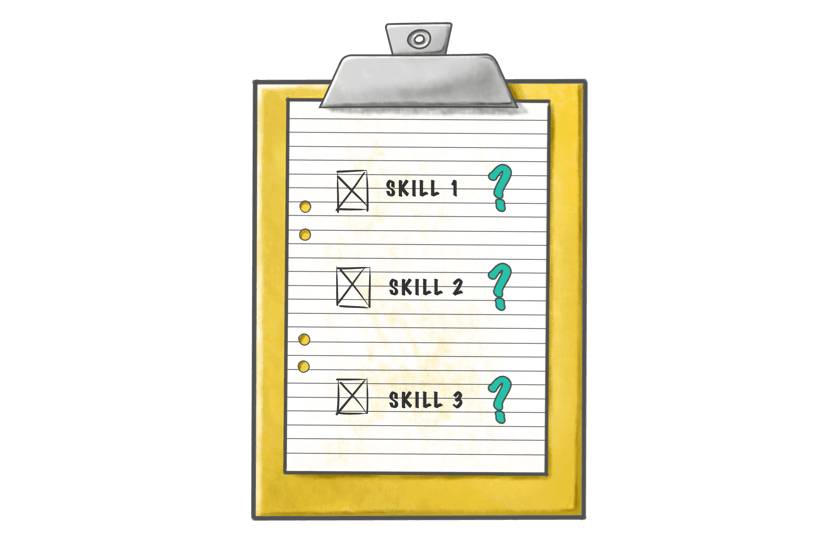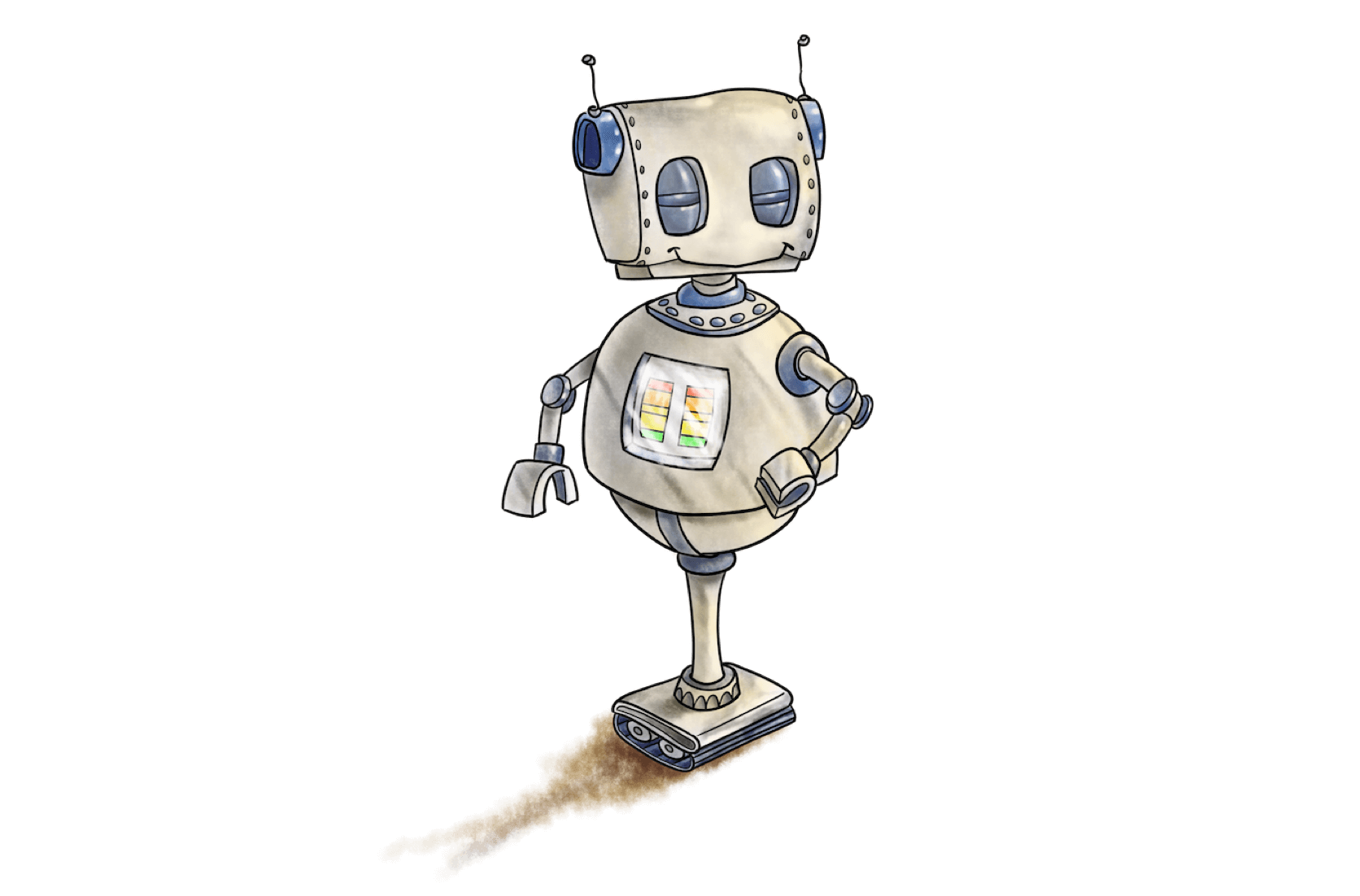
“What is Instructional Design?”
It’s exactly what the name describes; the process of designing instruction. Every class you’ve taken, every sign with a stick-lady or a stick-man on it, every OH&S meeting with day-old donuts and instant coffee you’ve snoozed through, has been designed by someone. That someone is the Instructional Designer.
The fact that you just thought, “wow, that all sounds so pointless” is why Instructional Design is due for an overhaul. Any good class you’ve ever had is probably an anomaly. For the most part, we’re all just waiting for any class, any company training, any TED talk over 3 minutes, to end. I’ve been thinking about this a lot lately, so I sat down with Yarno’s own Instructional Designer, Joel Smith. Joel and I talked about how ineffectual traditional Instructional Design is, and why it doesn’t have to be that way.
"What is the traditional approach to Instructional Design?"

To answer this question, Joel described to me the last big innovation in Instructional Design: Microsoft Powerpoint. I’m sure you’re all familiar . Groundbreaking back in 1987, unfortunately for most of us our experience has just been some man or lady with a monotone voice reading from slides. They give you all the content, not much more, and put a tick next to “training” on their to-do list.
Joel, fortunately, has had a very different, and much less traditional experience. He was introduced to the world of instructional design while he was working for Apple. It comprised a week-long “Socratic Method” inspired session with an instructor who answered every question, with another question. A whole course where not only was he not given any content, he wasn’t given any answers.
Joel: “It was maddening at first. But by the end of the week I was a true believer. We ended up teaching the whole course to ourselves, with him just pushing us forward.”
The premise of the Socratic Method is pretty clever. Basically, answering-a-question-with-another-question stimulates critical thinking by forcing you to draw out ideas and presumptions. Instead of someone giving you all the answers, you’re forced to think critically about each idea, and figure out the answers gradually using actual mental power, not memory. It sounds a bit insane, yes. However, Socrates invented it, which as we know, if an Ancient Greek guy says it works, it works. These are the guys who brought us Democracy, Cartography, and the delightful Gyros some people like to eat every Sunday between 2:30 and 2:45am.
Of course, in his time as a Lead Creative for Apple, he learnt much more than just how to answer a question with another question. He also gained a profound understanding of learning, and how to scaffold an idea in someone’s mind:
"Where do you start with a client when creating learning content?"
Joel: “Having a chat. Just having a chat, probing to discover. What we’re trying to achieve is shifting behaviours, and creating skills. But it’s hard for me to say to you, ‘What behaviours do you want to change?’ Or even, ‘What skills do you want to have?’ It’s much easier to identify problems. So you start by asking, ‘What problems are you experiencing?’ Then you work backwards to the skills and behaviours that you want to empower them with. And that applies to Yarno. That same approach is exactly what we still do with Yarno, in our content discovery workshops.”
“So you’ve identified the problem, how do you get the message across?”
“You have to speak in the language of the learner, so that the content you create is meaningful to them…you have to go beyond knowledge transfer, and figure out how to create a behaviour change.”
Most instructional design focuses on simple knowledge transfer: they have the content, they give it to you. Lectures, classrooms, the instructions before your plane takes off. While talking to Joel however, it was beginning to seem like that wasn’t enough. He seemed to think that how you say something was just as important, if not more so, than what you say. He had one particular example:
“We need to leave, my son needs to get dressed. I choose my son because he’s a volatile, irrational person. What is the first thing I choose to say to him? ‘Austin, hurry, we’ve got to get out the door, you’ve got to get your clothes on.’ What happens? I’ve imparted the knowledge - that he needs to get dressed. That’s great. But how does he react? He’ll probably either ignore me, or cry and scream that I’m making him do something he doesn’t want to do.”
Or, he could make another choice:
“Instead, I say, ‘Hey buddy, it turns out, that if you don’t get dressed now, we won’t have time to visit the new LEGO store. I’ve imparted the knowledge, but I’ve also done more than that; I’ve put it in his terms, and shown him why he needs to get dressed, in language he understands. What happens now? He might actually go and get dressed.”
Austin doesn’t care about getting dressed, but he cares a lot about LEGO. Something as simple as choosing your words carefully, can take you a step away from reciting content, toward behaviour change.
“Once you’ve figured out what problems people are having, and what behaviours you want to change, how do you get people to actually change their behaviour?”
“The most salient lessons happen when you’ve screwed up.”
You learn from your mistakes. Well, hopefully you learn from your mistakes. If you didn’t learn not to wear blue eyeliner in the 90s Karen, frankly, there’s no hope for you. The rest of us can move forward.
“It goes back to when we were cavemen, you know, just wandering around the Serengeti. Doff is chased by a lion, there’s a tree there, but he doesn’t climb it. The lion chews his leg off. Next time a lion chases Doff, he climbs the tree. He keeps the other leg.”
Of course, by the time you’ve had one of your legs chewed off, you’re probably not in a place to be climbing trees, and will probably lose the other leg as a result. Which is why, according to Joel, modern Instructional Design should “put people in a simulated environment, where they can make the same mistakes they would on the job, without the consequences.” It’s why the Socratic Method answers questions with more questions; you just keeping answering it wrong until you get it right. You learn from your mistakes, the message sinks in.
Okay, that makes sense, to change behaviour you let people make mistakes. They then learn from those mistakes and make a different choice next time. Pretty straightforward stuff.
"What's the purpose of Instructional Design? Is it just to impart knowledge?"

Joel left me with one final word on what the goal of Instructional Design is - or at least should - be:
“Cathy Moore is an Instructional Designer who is leading a paradigm shift in the industry. She’s inspired a lot of my Instructional Design ideologies. Her radical view is not that you train against knowledge, but that you train against behaviour. If you were to ask traditional Instructional Designers what the purpose of Instructional Design is, they would say "knowledge transfer." But that’s not at all what we’re after. We’re after critical thinking. Critical thinking imparts critical decision making, which elicits a behaviour."
Instructional Design needs to learn from its own mistakes. We know now that simply imparting knowledge isn’t enough. Instead, we need to focus on what behaviour needs to change, and what form of instruction will bring about that change. Powerpoint, you’ve had a good run. It’s not you, it’s just that it’s time for Instructional Design to move on.
To learn about the big impact little bites of learning can have, download our microlearning white-paper.











































































































